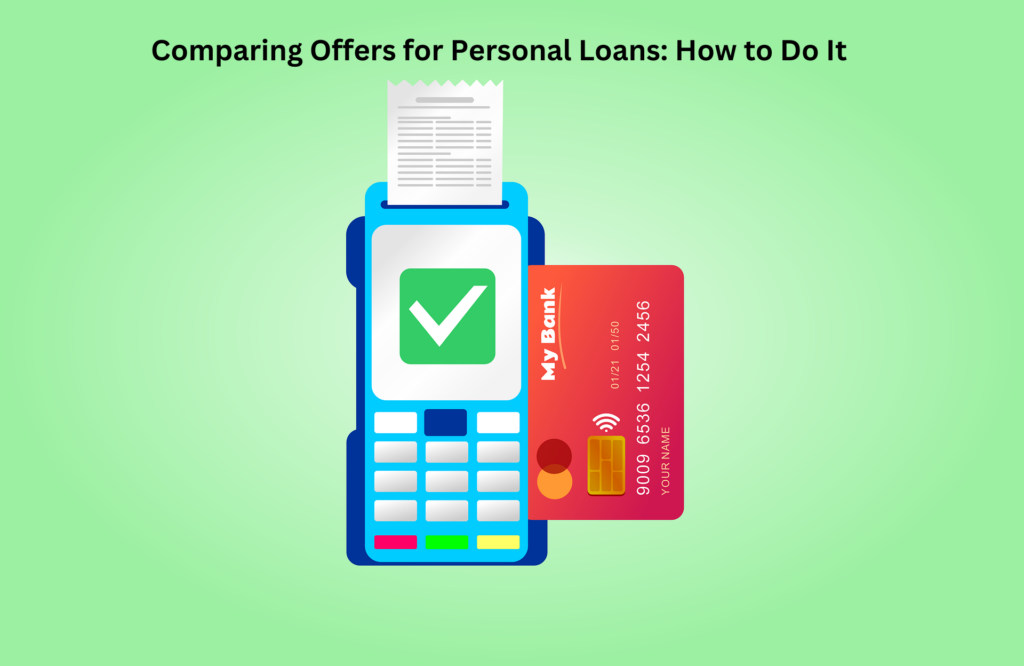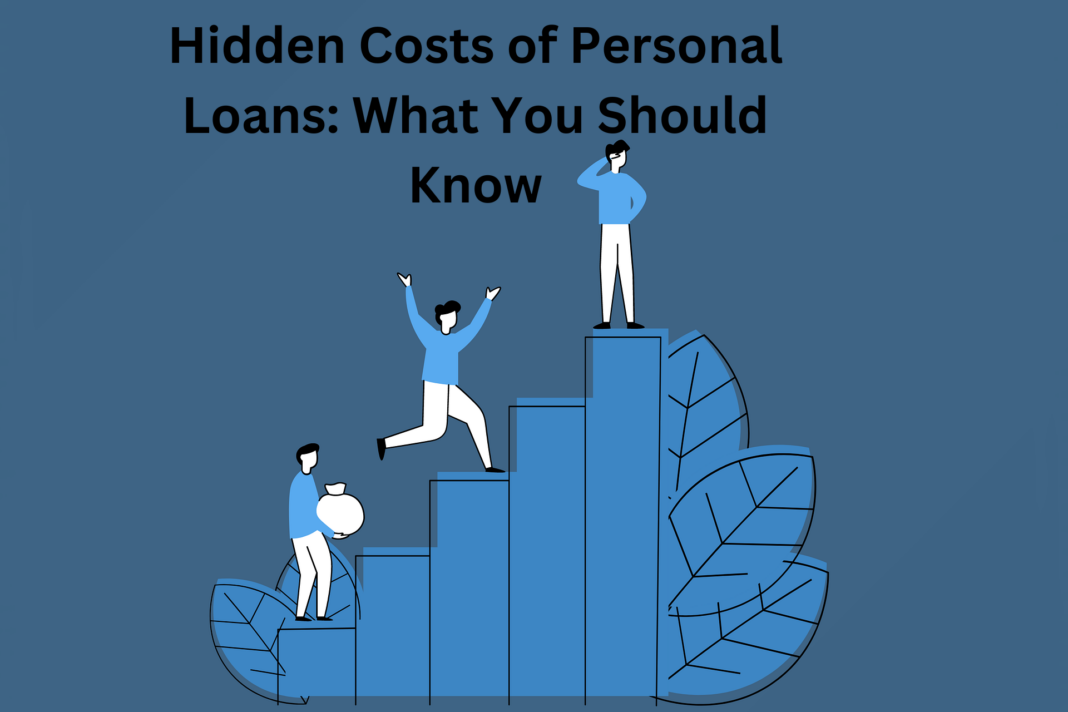Personal loans are a godsend when one needs more money. From debt consolidation to financing a home improvement project, they can help one get out of an unexpected expense. Yet, with the many lenders and options in the market, how does one choose the best? The secret lies in comparing personal loan offers effectively.

The following article will take you through the steps involved in comparing personal loan offers, which get you closer to making a well-informed decision to meet your financial needs. We’ll take a closer look at what to pay attention to when considering this kind of loan, show you how to work out the real cost of a loan and give you some useful hints on how to get the best deal possible. You will have acquired, by the end, the necessary knowledge to choose a personal loan that best fits your goals and budget.
Understanding Personal Loans
Before comparisons can be made, it is important to know what personal loans are. Personal loans are basically unsecured loans since they require no collateral. You borrow a fixed amount of money from the lender and agree to return that sum of money, plus interest, over a set period of time.
These personal loans can be used for numerous purposes, such as:
- Debt consolidation
- Home improvements
- Major purchases
- Wedding expenses
- Medical bills
- Emergency expenses
That said, let’s examine how well you can compare offers for a personal loan.
Key Points to Consider While Comparing Offers of Personal Loans
- Interest Rate
The interest rate is one of the most prominent factors to consider when comparing personal loans. It basically determines how much one has to pay over and above the principal amount borrowed. There are fixed and variable interest rates.
Fixed rates remain the same for the entire loan duration and provide predictable monthly repayments. Variable rates fluctuate over time, generally offering lower initial repayments but always carrying the risk of increasing later in the year.
When you compare offers, you should try to get the lowest interest rate. However, remember that the advertised rate may not be the rate to which you will qualify. Your credit score, income level, and debt-to-income ratio will determine what rate you will actually qualify for.
- Annual Percentage Rate (APR)
Whereas the interest rate is important, the Annual Percentage Rate gives a better understanding of the overall cost of the loan. The APR considers not only the interest rate but also any other fees that might be attributed to the loan, such as origination fees or closing costs.
When comparing loans, look at the APR, not just the interest rate. A loan can have a somewhat higher interest rate but lower overall fees, therefore coming out cheaper than a loan with a low rate but high fees.
- Loan Terms
The loan term is the time period that you have to repay the loan. The typical terms for personal loans range between 12 and 60 months. Some other lenders, however, can offer longer terms of up to 84 months or more.
The longer the terms, the lesser your regular monthly account would normally be, but in the long run, you pay more in interest within the span of your loan. The shorter terms will mean higher monthly payments, but you’ll pay less in interest.
When comparing offers, consider the implications of the loan term on both your monthly budget and the total cost of the loan.
- Loan Amount
Some lenders have different loan amounts. Though some may offer small personal loans, only a few thousand dollars are allowed, but other firms grant loans of $100,000 or more.
Make sure the lender can offer you the amount required. Still, be very critical of borrowing beyond your needs to avoid added costs and possibly overstraining yourself financially.
- Fees
Besides interest, personal loans can be charged in different ways. Some of the common fees to expect include:
- Origination fees are a certain percentage, usually 1-8%, taken from the loan proceeds.
Late payment fees: Those charged when one fails to pay on time or after the due date. Prepayment penalties: Fees charged if one pays his loan off earlier. Comparing Offers: When comparing offers, pay close attention to these types of fees. A loan with a lower interest rate but high fees could actually become more expensive than a loan with a slightly higher rate and no fees. 6. Funding Time
If you need the money urgently, compare how long each lender can fund the loan. While some online lenders approve and fund loans in a day or two, other options in traditional banks may take a week or more.
- Repayment Options
Find lenders that offer options concerning the issuance of repayments. These are great features to have:
- Capability to choose your due date for payment
- Options for biweekly or monthly payments
- Direct debit consolidation loans creditors in payment
- Lender’s Reputation and Customer Service
Research the reputation of each lender by reading customer reviews and scores via the Better Business Bureau. Factors you may want to consider include:
- Responsiveness to customer inquiries
- Transparency about terms and conditions associated with the loan
- Ease of online account management tools
Good customer service will go a long way toward making borrowing easier, especially if there are hiccups during the loan’s tenure.
Calculating the True Cost of a Loan
The best way to compare the various personal loan offerings available to you is to go beyond the dollar amount of the monthly payment to determine how much that loan will cost you. Here’s how you can do it:
- Calculate the Total Interest Paid
Then, multiply the monthly payment by the number of months in the loan term and subtract the loan amount. This will give you the total interest to be paid over the course of the loan.
- Account for Fees
To better understand the true cost of the loan, add upfront fees, such as origination fees, to the total interest.
- Opportunity Cost
Think about what else you could be doing with that money you’re spending to pay the interest and fees. Could you invest it? Pay other debt? Save for a big purchase?
- Use Loan Comparison Tools
Several financial websites offer loan comparison calculators. These tools let you enter details from multiple loan offers and show you side-by-side comparisons of total costs.
Steps to Compare Personal Loan Offers
Now that you know what you are looking for, here is how you can effectively compare several personal loan offers:
- Check Your Credit Score
Your credit score will have a huge impact on your loan offer terms. You can get access to a free report via AnnualCreditReport.com. Clean up errors on your report before applying for any loans.
- Prequalify with Multiple Lenders
Most will pre-qualify you, which gives you a sense of what your loan terms might look like without damaging your credit score. Do this with several lenders to get a sense of what different offers might look like.
- Gather and Compare Loan Details
For each offer, write down the following:
INTEREST RATE AND APR
Loan term
Monthly Payment
Total interest paid
Fees
Any special features or benefits
- Calculate the Total Cost of Each Loan
Use the calculation technique illustrated above to identify the actual cost for each loan offer.
- Consider the Budget
Let the monthly payments be within an extremely affordable budget. Note that this doesn’t mean that even though it is the least costly, it isn’t necessarily the finest if the installments are straining the wallet especially.
- Read the Fine Print
Carefully evaluate the terms and conditions of each loan offer. Prepayment penalties, late fees, and other charges can all impact the cost of your loan.
- Negotiate
Don’t be afraid to negotiate with lenders, especially if you have competing offers. Some lenders may match or beat a competitor’s rate or fees.
Tips for Securing the Best Personal Loan Offer
- Improve Your Credit Score
The better your credit score, the better terms you can get on a loan. Pay your bills on time, lower your credit card balances, and don’t apply for new credit before applying for a personal loan.
- Consider Using a Co-signer
If you have poor or mediocre credit, you may be able to get better terms by applying with a co-signer who has good or excellent credit.
- Comparison Shopping
Don’t take the first offer. Compare offers among banks, credit unions, and online lenders to get the best deal.
- Watch Out for Predatory Lenders
Avoid lenders who pressure you into now-or-never decisions, promise approval without verifying your credit, or slap on excessively high fees.
- You may want to consider secured loans.
If this seems impossible and you’re finding it hard to qualify for an unsecured personal loan, consider a secured loan in which you pledge an asset as collateral. Just be very aware of the risks.
- Borrow Only What You Need
Avoid borrowing more than you need, even if a lender is willing to provide more. The less you borrow, the less interest and fees you’ll pay.
Conclusion
Though the time and effort required to compare personal loan offers may be quite extensive, it is well worth the deal you will get by having everything perfectly in place. By understanding the key drivers of loan cost, analyzing the true cost of each offer, and following a systematic process for comparing, you can make an informed decision that fits your financial goals.
Remember that the best personal loan isn’t always the one with the lowest rate or the largest loan amount. Rather, it is about finding one that balances between favorable terms and manageable payments with overall cost-effectiveness for your particular situation.
While comparing your personal loan options, keep your financial goals in mind and avoid rushing into a decision you will regret. Take the time to actually read over each offer, ask questions, and negotiate when possible. You can do so and be in a really good position to pick a personal loan that best accommodates your needs without putting too much strain on your finances.
With that in mind, you’re now prepared to navigate the personal loan landscape. Borrow happy!






